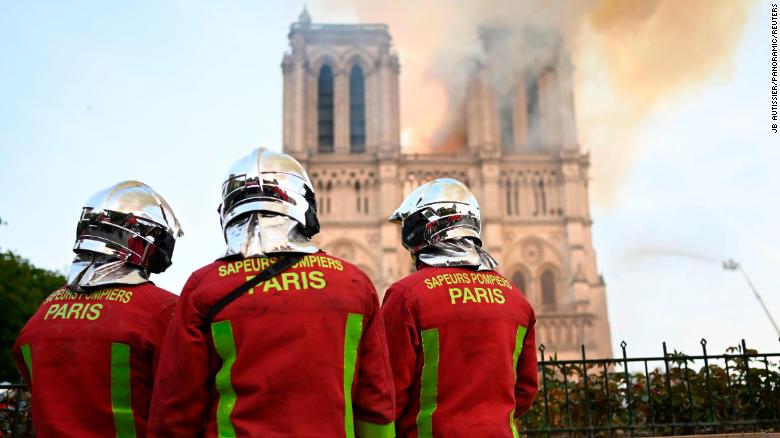Once the beams start burning, the stone exterior makes it harder for firefighters outside the building to get to the source of the flames. The stone traps heat and smoke, preventing them from working inside.
The Notre Dame’s height also posed a challenge, providing extra oxygen for the fire to breath and complicating efforts to reach the flames.
“The fuel load is way up in the air, and the firefighters can’t get to it quickly,” said Glenn Corbett, associate professor of fire science at New York’s John Jay College of Criminal Justice.
Aerial options like the one suggested by US President Donald Trump were also considered unrealistic.
“Perhaps flying water tankers could be used to put it out. Must act quickly!” Trump said in a tweet.
But according to Corbett, no plane pilot could drop water “exactly in that one spot moving several hundred miles an hour over it.”
Corbett also ruled out the use of helicopters: “One of the issues you’ve got here, is that thermal updraft, that’s a chimney effectively, you can’t fly a helicopter in hot air. The air is so thin.”
Despite the huge challenges, the 400 firefighters were able to save a significant proportion of the cathedral.
Thomas Von Essen, a former commissioner of the New York City Fire Department who served during the September 11 attacks, said a photograph of the interior was encouraging.
“It’s not, you know, 30 feet of debris … stuff that’s going to be smoldering for days. It looks like they got this fire out,” said Von Essen.
“The fact that they were able to control the fire spread as much as they did and save a large portion of the building, including the two bell towers, it’s a tremendous effort,” said Favre.
“I think any firefighter that you ask that does this for a living would tell you that this is a significant firefighting event and those firefighters should be praised significantly.”














